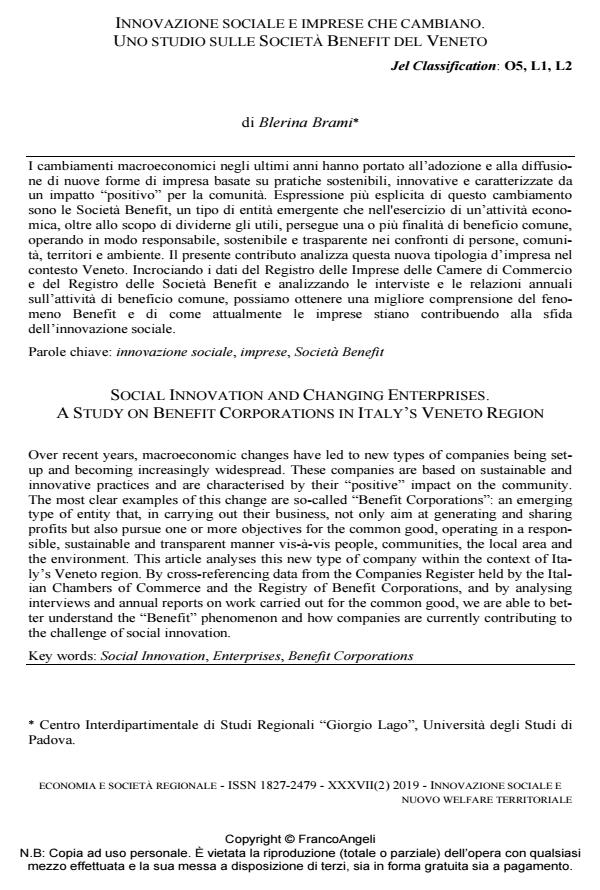Innovazione sociale e imprese che cambiano. Uno studio sulle società benefit del Veneto
Titolo Rivista ECONOMIA E SOCIETÀ REGIONALE
Autori/Curatori Blerina Brami
Anno di pubblicazione 2019 Fascicolo 2019/2
Lingua Italiano Numero pagine 12 P. 96-107 Dimensione file 248 KB
DOI 10.3280/ES2019-002009
Il DOI è il codice a barre della proprietà intellettuale: per saperne di più
clicca qui
Qui sotto puoi vedere in anteprima la prima pagina di questo articolo.
Se questo articolo ti interessa, lo puoi acquistare (e scaricare in formato pdf) seguendo le facili indicazioni per acquistare il download credit. Acquista Download Credits per scaricare questo Articolo in formato PDF

FrancoAngeli è membro della Publishers International Linking Association, Inc (PILA)associazione indipendente e non profit per facilitare (attraverso i servizi tecnologici implementati da CrossRef.org) l’accesso degli studiosi ai contenuti digitali nelle pubblicazioni professionali e scientifiche
I cambiamenti macroeconomici negli ultimi anni hanno portato all’adozione e alla diffusione di nuove forme di impresa basate su pratiche sostenibili, innovative e caratterizzate da un impatto "positivo" per la comunità. Espressione più esplicita di questo cambiamento sono le Società Benefit, un tipo di entità emergente che nell'esercizio di un’attività economica, oltre allo scopo di dividerne gli utili, persegue una o più finalità di beneficio comune, operando in modo responsabile, sostenibile e trasparente nei confronti di persone, comunità, territori e ambiente. Il presente contributo analizza questa nuova tipologia d’impresa nel contesto Veneto. Incrociando i dati del Registro delle Imprese delle Camere di Commercio e del Registro delle Società Benefit e analizzando le interviste e le relazioni annuali sull’attività di beneficio comune, possiamo ottenere una migliore comprensione del fenomeno Benefit e di come attualmente le imprese stiano contribuendo alla sfida dell’innovazione sociale.
Parole chiave:Innovazione sociale, imprese, Società Benefit
Blerina Brami, Innovazione sociale e imprese che cambiano. Uno studio sulle società benefit del Veneto in "ECONOMIA E SOCIETÀ REGIONALE " 2/2019, pp 96-107, DOI: 10.3280/ES2019-002009